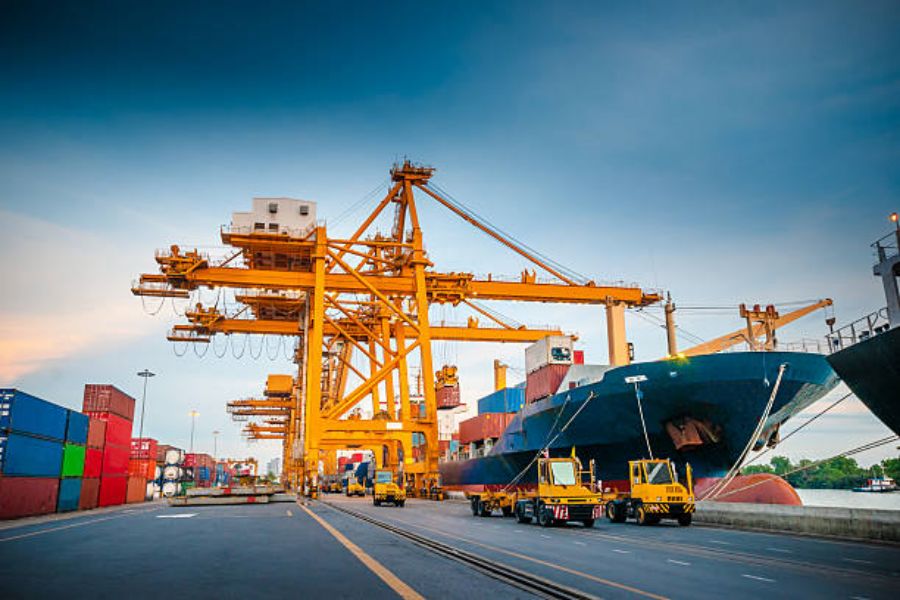The Versatility of Hoist and Crane: A Comprehensive Guide
Hoists and cranes are vital tools in various industries, facilitating the lifting and movement of heavy loads with ease and precision. From construction sites to manufacturing plants, these mechanical devices offer efficiency and safety in countless applications. In this comprehensive guide, we will explore the different aspects and prospects of hoist and crane technology, highlighting their importance, types, benefits, and maintenance.
1. Understanding Hoist and Crane Technology
Hoist and crane technology refers to the engineering advancements in lifting and moving heavy objects. It involves the use of mechanical devices, such as hoists and cranes, to perform these tasks efficiently and safely. These devices are designed to handle various weight capacities, ensuring the safe transportation of loads in numerous industries.
2. Types of Hoists and Cranes
Hoists and cranes come in a variety of types, each designed to suit specific applications and load capacities. Some common types include:
- Electric Wire Rope Hoists
- Chain Hoists
- Overhead Cranes
- Gantry Cranes
- Jib Cranes
- Mobile Cranes
These diverse options allow industries to choose the most suitable hoist or crane for their unique requirements, ensuring optimal performance and safety.
3. Benefits of Hoist and Crane Technology
The use of hoists and cranes offers numerous benefits to industries. Some of the key advantages include:
- Increased Efficiency: Hoists and cranes enable swift and efficient movement of heavy loads, reducing manual labor and saving time.
- Enhanced Safety: By mechanizing the lifting process, hoists and cranes minimize the risk of accidents and injuries associated with manual lifting.
- Improved Precision: These mechanical devices allow for precise control over load placement, ensuring accurate positioning and reducing the chances of damage.
- Flexibility: Hoists and cranes are versatile tools that can be used in various settings, adapting to different load capacities and environments.
4. Applications of Hoist and Crane Technology
Hoists and cranes find applications in a wide range of industries. Some notable examples include:
- Construction: Hoists and cranes play a pivotal role in lifting heavy construction materials, such as steel beams and concrete blocks, to desired heights.
- Manufacturing: These devices facilitate the movement of machinery, raw materials, and finished products within manufacturing facilities, ensuring smooth operations.
- Warehousing: Hoists and cranes aid in the efficient organization and storage of goods, optimizing space utilization and inventory management.
- Shipping and Logistics: Cranes are essential in ports and shipyards for loading and unloading cargo from ships, ensuring timely and secure transportation.
- Mining: Hoists and cranes are utilized in mining operations to extract heavy minerals and transport them to processing areas.
5. Maintenance and Safety Considerations
Regular maintenance is crucial to ensure the longevity and optimal performance of hoists and cranes. Some key maintenance and safety considerations include:
- Inspecting equipment for signs of wear and tear regularly.
- Lubricating moving parts to reduce friction and prevent damage.
- Training operators on proper usage and safety protocols.
- Conducting periodic load testing to verify the integrity of the equipment.
- Adhering to manufacturer guidelines and recommended service intervals.
6. Future Trends in Hoist and Crane Technology
As advancements in technology continue to reshape industries, hoist and crane technology is also evolving. Some future trends that may shape the industry include:
- Integration of automation and artificial intelligence for enhanced efficiency and precision.
- Development of eco-friendly and energy-efficient hoists and cranes.
- Increased use of remote monitoring and diagnostics for proactive maintenance.
- Introduction of safety features, such as collision avoidance systems, to further minimize accidents.
7. Choosing the Right Hoist and Crane for Your Needs
When selecting a hoist or crane for your specific requirements, several factors should be considered:
- Load capacity: Determine the maximum weight the hoist or crane needs to handle.
- Operating environment: Consider factors such as space constraints, temperature, and hazardous conditions.
- Mobility requirements: Assess whether a mobile crane or a stationary hoist would be more suitable for your needs.
- Budget: Evaluate the costs associated with purchasing, operating, and maintaining the equipment.
8. Key Manufacturers and Suppliers
Several reputable manufacturers and suppliers offer high-quality hoists and cranes. Some notable names in the industry include:
- Demag Cranes
- Konecranes
- Street Crane Company
- Abus Crane Systems
- Columbus McKinnon Corporation
9. Regulations and Standards
Various regulations and standards govern the use of hoists and cranes to ensure safety and compliance. Examples include:
- Occupational Safety and Health Administration (OSHA) standards in the United States.
- European Standard EN 14492 for hoists.
- International Organization for Standardization (ISO) standards for cranes.
10. Conclusion
Hoists and cranes have revolutionized the way industries handle heavy loads, providing efficiency, safety, and versatility. Whether in construction, manufacturing, warehousing, or mining, these mechanical devices play a vital role in various applications. By understanding the different types, benefits, maintenance considerations, and future trends in hoist and crane technology, industries can make informed decisions to optimize their operations and achieve greater productivity.

